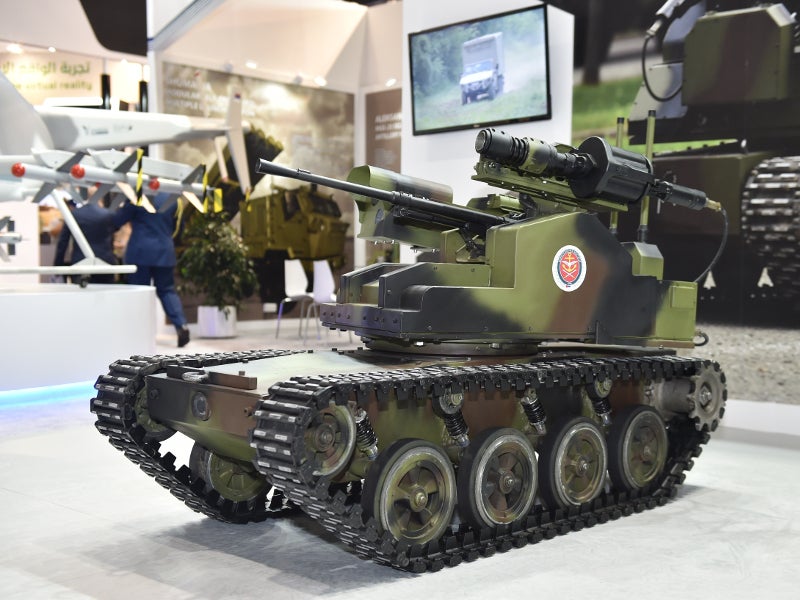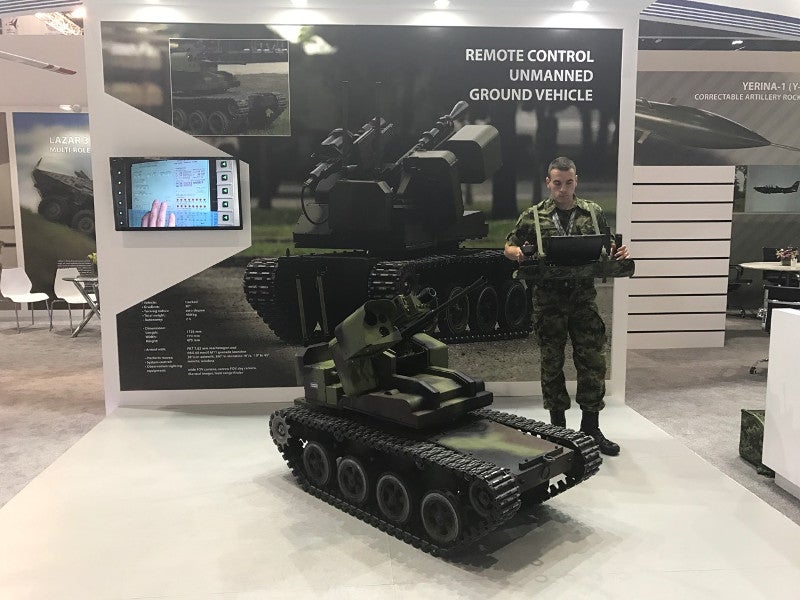The Milos unmanned ground vehicle (UGV) was developed by the Military Technical Institute (MTI) of Serbia in co-operation with PPT Namenska to meet the requirements of the Serbian Army.
The unmanned ground vehicle is intended to assist special forces and reconnaissance troops in counter-terrorism missions in urban and cross-country environments.
It was displayed in June 2019 at the Partner 2019 international arms fair in Belgrade, and is currently undergoing trials at the Serbian Technical Test Centre.
Milos UGV design and features
Milos is a remotely-operated tracked vehicle powered by an electric drive system. Its small silhouette, along with silent power-plant and rubberised track, ensures quiet movement while approaching the targets.
The UGV measures 1.72m-long, 0.7m-wide, and 0.95m-high and has a curb weight of 680kg, while the weights of the driving base and the battle station are 430kg and 250kg, respectively.
Milos UGV armament and self-protection
The weapon systems installed aboard the Milos UGV include an M86 7.62mm fed by an ammunition box holding 500 rounds and an RBG 40mm grenade launcher with a capacity of six shells. The vehicle is also installed with an automatic counter of rounds in the ammunition box.
The battle station can revolve in 360° at speeds between 0.05° per second and 48º per second, while the elevation range of the station is between -15º and 50º. It is also installed with a meteorological sensor.
Milos offers STANAG 4569 Level I protection and can withstand hits from 7.62mm rounds.
Observation and control
The optoelectronic block fitted to the UGV integrates a daylight charge-coupled device (CCD) camera with a continuous zoom of up to 30x, a night vision-thermal camera with a digital zoom of up to 4x, and a laser range finder with a range of up to 2,000m.
The CCD and thermal cameras can detect human targets at distances of up to 1,000m and 450m, respectively. The block also houses an additional camera for persistent observation of objects.
Milos unmanned ground vehicle is remotely-controlled by either fixed control panels in the command-control vehicle or a man-portable mobile control panel. Operated by a single soldier, the remote control system employs easy-to-use software and a fire control system to engage designated targets.
The UGV also features automatic networking capability to interoperate with other platforms to increase the control range for missions in urban environments.
Milos unmanned ground vehicle power and mobility
Milos UGV is equipped with an electric propulsion system powered by advanced batteries. The battery pack can be charged by an independent charger. The robot is also installed with a battery management system to monitor the battery power levels as well as the voltage and electricity.
The autonomous endurance of the vehicle depends on the conditions of usage and the terrain. The endurance is two hours when travelling, while static observation and firing missions can be performed for eight hours. The persistence during the tasks involving movement, observation, and shooting in harsh terrains is two hours.
Milos unmanned ground vehicle can negotiate gradients of 57.7% and side slopes of up to 46.6%. It can cross a maximum vertical obstacle of 200mm and a maximum trench width of 250mm.
The UGV offers a ground clearance of 200mm and can enter buildings through doors with a standard width of 800mm. It can be transported by a trailer, which can be towed by 4×4 military vehicles.






